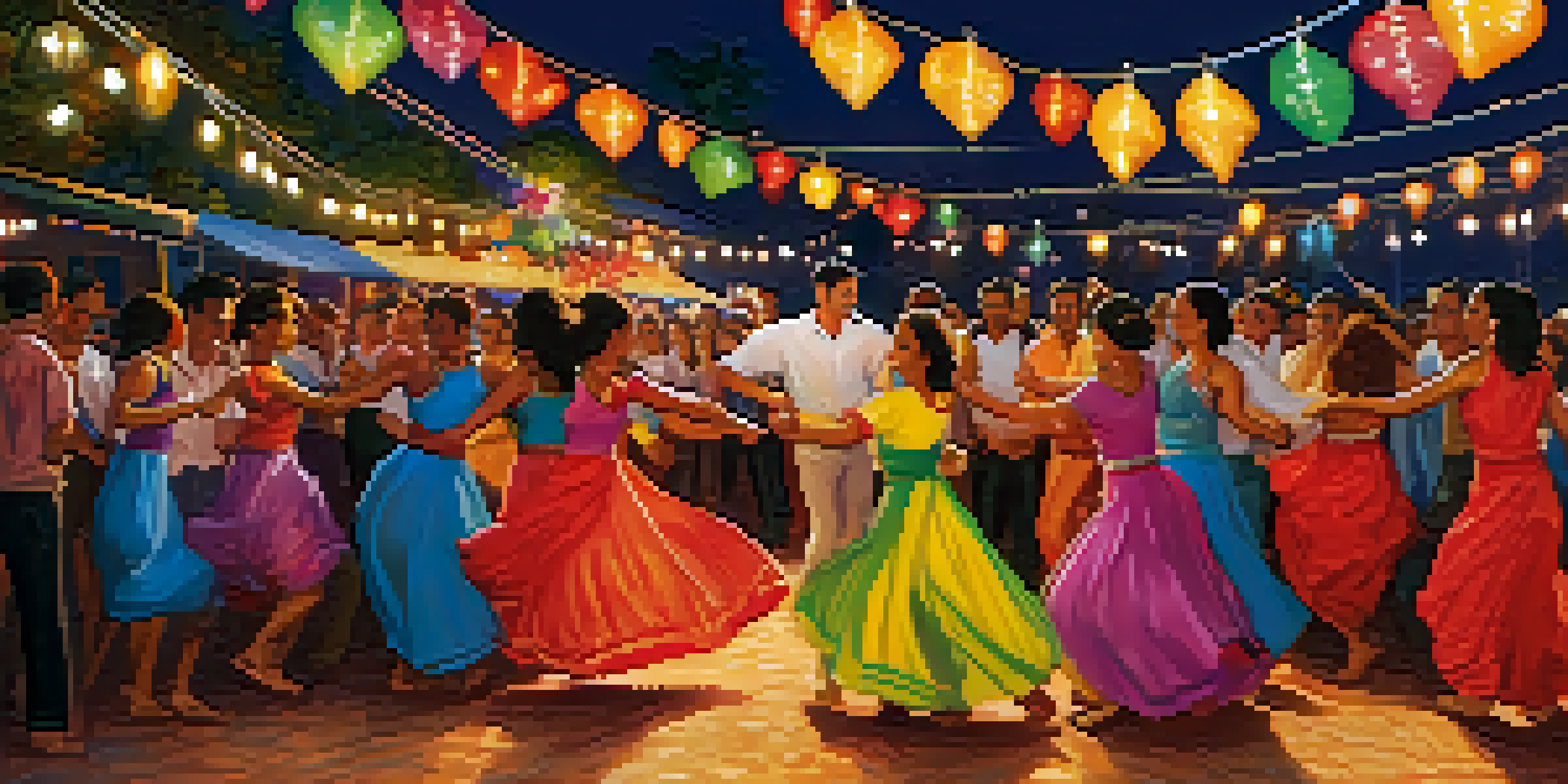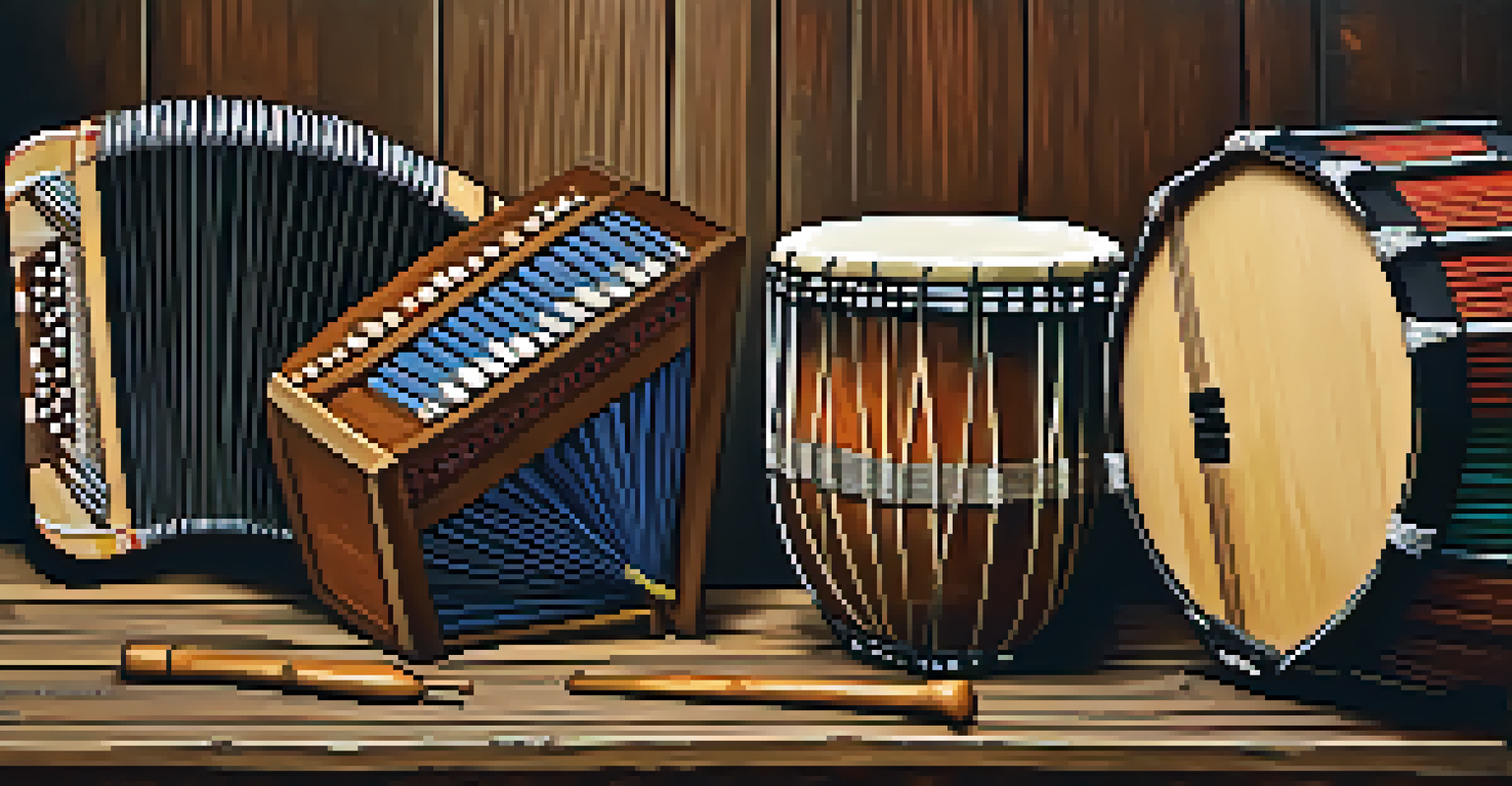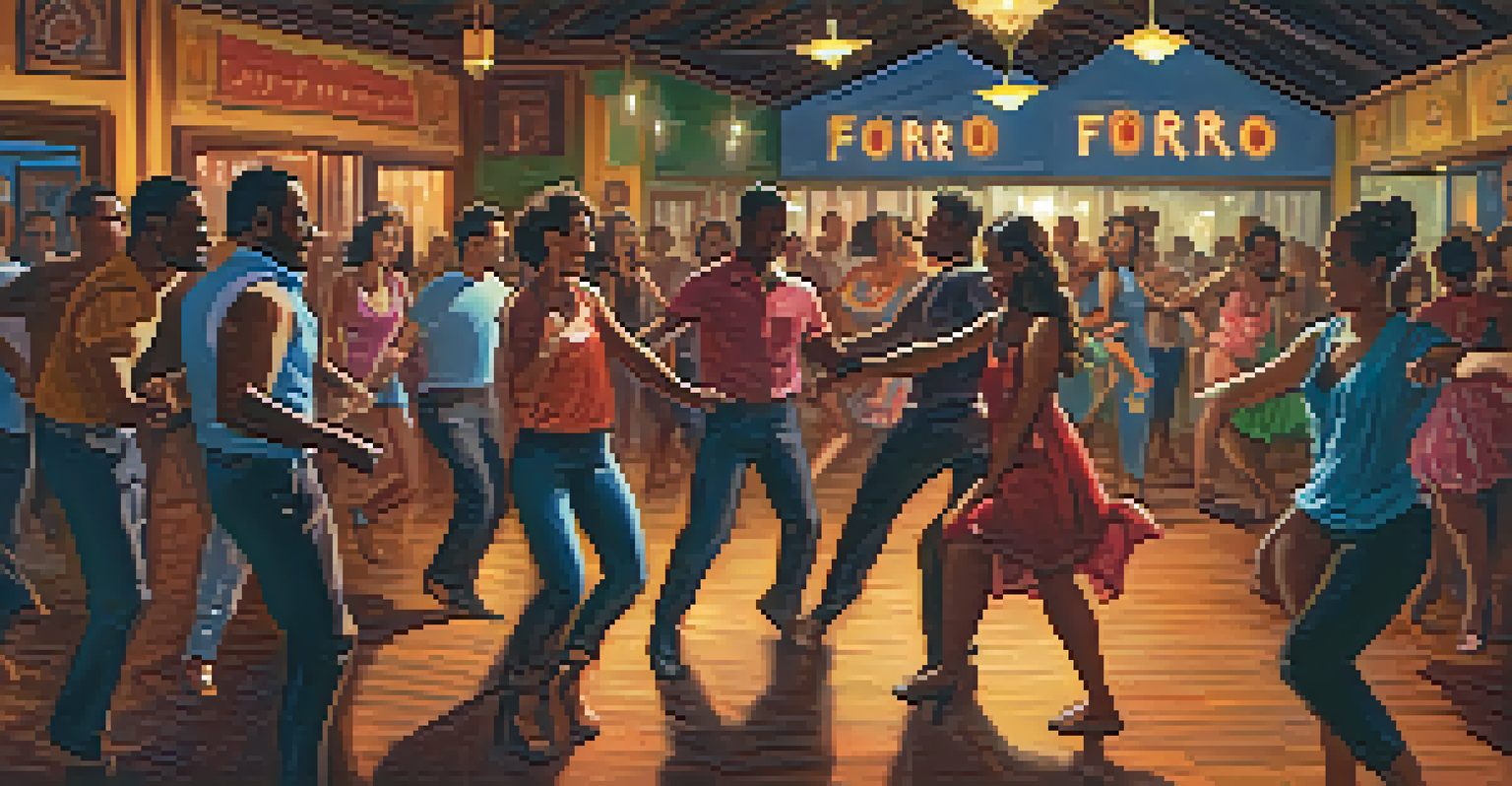Exploring the Roots of Forró: A Musical Journey in Brazil

What is Forró? Understanding the Basics
Forró is not just a music genre; it's an experience that embodies the spirit of Brazil. Originating in the Northeast region, it combines various musical influences, including European, African, and Indigenous sounds. The term 'forró' itself is thought to come from a phonetic adaptation of the English phrase 'for all,' reflecting the inclusive nature of the dance and music.
Forró is an expression of the soul, a way of connecting with others through rhythm and movement.
At its core, Forró is a lively mix of rhythm and melody, often featuring instruments like the accordion, zabumba (a type of drum), and triangle. It's a celebration of life, love, and community, bringing people together on the dance floor. The infectious beats make it hard to resist moving your feet.
For many, Forró is synonymous with festivals and social gatherings. Whether it's a local party or a grand event like the São João Festival, the music creates an atmosphere where everyone feels invited to join in the fun.
A Brief History of Forró's Origins
The roots of Forró can be traced back to the 19th century in the rural areas of Brazil. It was a time when different cultures mingled, leading to the creation of new musical styles. As the story goes, migrants from various regions brought their musical traditions, which eventually blended into Forró.

Initially, Forró was closely associated with the countryside and rural festivities. It wasn't until the mid-20th century that it began to gain popularity in urban areas, thanks to influential artists and radio broadcasts. This transition helped to popularize Forró beyond its regional confines, making it a staple in Brazilian culture.
Forró: A Cultural Celebration
Forró is a vibrant music and dance genre that embodies the spirit of community and cultural identity in Brazil.
Today, Forró is celebrated not just in Brazil but around the world. Its infectious rhythm and joyous spirit resonate with people from all walks of life, proving that music can transcend borders.
Key Instruments That Define Forró Music
The sound of Forró is unmistakable, and that's largely due to its key instruments. The accordion is perhaps the most iconic, providing melodic lines that can evoke a range of emotions. It's often played with a sense of urgency and joy, inviting dancers to hit the floor with enthusiasm.
Music brings people together in ways that nothing else can; Forró is the heartbeat of Brazilian culture.
Another essential instrument is the zabumba, a large bass drum that gives Forró its characteristic heartbeat. The rhythm produced by the zabumba sets the pace for dancers, creating an irresistible call to move. Meanwhile, the triangle adds a bright, sharp sound that cuts through the mix, enhancing the overall texture of the music.
Each instrument plays a vital role in creating the lively atmosphere of Forró. Together, they form a harmonious blend that reflects the culture and spirit of Brazil, making every performance a vibrant celebration.
The Dance of Forró: Steps and Styles
Forró is as much about dancing as it is about music. The dance is characterized by its close partner work and intricate footwork, often incorporating spins and turns. It's an intimate form of expression that allows dancers to connect with both their partners and the music.
There are several styles of Forró dance, including the traditional Forró Pé-de-Serra and the more modern Forró Universitário. While Pé-de-Serra is rooted in its folkloric origins, Universitário appeals to younger audiences with its faster pace and diverse influences. Both styles, however, maintain the core essence of Forró.
Key Instruments of Forró
The distinctive sound of Forró is defined by the accordion, zabumba, and triangle, each contributing to its lively atmosphere.
Learning to dance Forró can be a delightful experience, as it encourages creativity and spontaneity. Whether you're a seasoned dancer or a curious beginner, the welcoming atmosphere of Forró makes it easy to join in and enjoy.
Cultural Significance of Forró in Brazil
Forró is more than just music; it's a cultural phenomenon that reflects the identity of Brazil's Northeast region. It serves as a storytelling medium, conveying the joys and struggles of everyday life. Through its lyrics and rhythms, Forró captures the essence of Brazilian culture.
During festivals and community gatherings, Forró acts as a unifying force, bringing people together regardless of age or background. It's common to see families, friends, and even strangers come together to dance and celebrate, creating a sense of belonging and shared joy.
Moreover, Forró has transcended its regional roots, influencing various musical genres both in Brazil and internationally. From samba to pop, the spirit of Forró can be felt in many forms of music, showcasing its enduring legacy.
Modern Forró: Evolution and Popularity
In recent years, Forró has seen a resurgence in popularity, especially among younger audiences. This revival is fueled by social media and online platforms, where dance challenges and music videos have brought Forró to a global stage. Artists are now experimenting with modern sounds while keeping traditional elements alive.
Festivals dedicated to Forró have also become more frequent, attracting both local and international visitors. These events celebrate the music and dance, providing opportunities for dancers and musicians to showcase their talents and connect with others who share their passion.
Modern Forró's Global Revival
Forró is experiencing a resurgence in popularity, particularly among younger audiences, thanks to social media and vibrant festivals.
As Forró continues to evolve, it remains rooted in its rich history and cultural significance. This dynamic balance between tradition and innovation ensures that Forró will remain a beloved part of Brazil's musical landscape for generations to come.
How to Experience Forró: Events and Festivals
Experiencing Forró is a treat for the senses, and the best way to do so is by attending festivals and events. The São João Festival, held annually in June, is perhaps the largest celebration of Forró, featuring music, dance, and delicious traditional foods. It's a vibrant showcase of Northeastern culture that attracts visitors from all over Brazil and beyond.
Local dance clubs and community events also offer opportunities to immerse yourself in Forró. Many cities have Forró nights where you can learn the basics and enjoy live music. These gatherings provide a welcoming environment for newcomers, making it easy to join the fun and meet fellow dance enthusiasts.

If you're unable to travel to Brazil, there are online classes and virtual events that allow you to experience Forró from the comfort of your home. The joy of Forró is just a click away, ensuring that anyone can connect with this vibrant musical tradition.